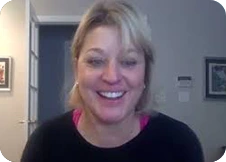✏️ Editor’s Note: Realtor Associations, agents, and MLS’ have started implementing changes related to the NAR’s $418 million settlement. While home-sellers will likely save thousands in commission, compliance and litigation risks have significantly increased for sellers throughout the nation. Learn how NAR’s settlement affects home buyers.
It’s natural to wonder how much money you need to save for a down payment. With home prices skyrocketing, saving up for a down payment can be a big hurdle for many homebuyers.
But can you buy a house with zero down payment? The answer is yes! You can.
Here, we’ll look at how buying a house with zero down payment works. Apart from that, we will also explore whether no or low down payment loans make sense for you. So, to know start your mortgage process now!
🚀 Key Takeaways
- Why USDA Loans are Affordable: Zero downpayment and low-interest rates make USDA loans affordable for low and moderate-income groups.
- Types of USDA Loans: The three types of USDA loans are USDA Direct Loan, USDA Guaranteed Loan, and USDA Home Improvement Loan.
- USDA Loans Origination Fee: You need to pay a USDA loan origination fee of about 1%.
- USDA Loan Eligibility Criteria: You must meet the income and the citizenship requirements to be eligible for a USDA loan.
What is a USDA Loan?
The United States Department of Agriculture (USDA) home loans are government-backed mortgages for home buyers with low incomes. They are non-conforming loans guaranteed by the USDA Rural Development Guaranteed Housing Loan Program.
USDA home loans require zero down payment. This makes them affordable for low to moderate-income home buyers. Additionally, USDA mortgage rates are less than conventional mortgages.
Types of USDA Rural Development Loans
There are three types of USDA loans:
- USDA Guaranteed Loans: Private mortgage lenders such as banks and mortgage companies issue these loans. It has 2 forms of mortgage insurance: an upfront guarantee fee and an annual mortgage insurance premium.
- USDA Direct Loans: The USDA directly issues these loans. They have a lower income requirement and are offered at subsidized interest rates. There is no mortgage insurance.
- USDA Home Improvement Loans: You can use these loans to make necessary repairs and improvements to your home.
USDA Loan Requirements
You need to meet the following requirements to be eligible for a USDA home loan:
- USDA Property Eligibility: The property must be located in a designated rural area as defined by the USDA. Use the USDA loan’s eligibility map to determine if your property meets the eligibility requirements.
- Income: Your household income should be less than or equal to 115% of your area’s median income.
- Credit Score: Generally, lenders require a credit score of 640 or higher. Lenders will review your credit score, payment history, and debt-to-income ratio to assess your creditworthiness.
- Employment: You must have a stable income and employment history. Typically, lenders require a minimum employment history of two years. However, exceptions exist for recent graduates.
- Debt-to-Income ratio: Your debt-to-income ratio (DTI) must be 41% or less.
- Citizenship: Rural loans are available to U.S. residents, non-citizen nationals, or permanent resident aliens.
How Much Do I Need to Pay as USDA Loan Fee?
USDA financing comes with two specific fees:
- Guarantee Fees: Mortgage lenders pay an upfront guarantee fee, which is indirectly covered by the borrowers. This upfront fee will not exceed 3.5% of the principal amount of the loan.
- Annual Fee: Buyers need to pay 0.35% of the loan amount as the annual fee. For example, a $100,000 mortgage would have a $1,000 down payment and a $350 annual payment.
Other USDA Mortgage Costs
In addition to USDA closing costs, there are a few other fees. These fees vary depending on the lender.
- Credit Report Fee: The credit report fee covers the cost of assessing your credit score to determine your creditworthiness.
- Loan Origination Fee: Some lenders may charge a loan origination fee. This is to process the loan application and prepare the necessary documentation.
- Prepaid Interest: Borrowers have to pay the accrued interest from the closing date to the end of that month. This amount is known as prepaid interest.
- Escrow Fees: Many USDA loans require you and the seller to start an escrow account. Because escrow accounts hold funds for property taxes, homeowners insurance, and other expenses.
- Title Fee: The title fee comprises costs of title examination and title insurance. Title examination ensures that the property’s title is clear of any liens or ownership disputes. On the other hand, title insurance protects you against any potential title defects.
Pros and Cons of USDA Loan
The USDA loan program is designed to help low-to-moderate-income families in rural areas. Like any loan, the RD loan has its pros and cons. Here are some of them:
Pros of USDA Loans
- Affordable Mortgage Rates: USDA guarantee lets lenders offer some of the lowest interest rates.
- Flexible Credit Requirements: There is no minimum credit score for USDA loans. However, to use USDA’s automated underwriting system, you’ll need a score of 640 or higher.
- No PMI Requirement: Unlike many other loan programs, RD loans do not require private mortgage insurance. This can significantly reduce your monthly mortgage payments.
- Promotes Rural Development: USDA loans are specifically designed to promote homeownership and development in rural areas.
- No Down Payment: A USDA loan eliminates the need for a down payment. It offers 100% financing of the home’s purchase price.
Try America’s #1 Mortgage Calculator to see how much house you can afford. Get an instant amortization schedule and a detailed cost breakdown for free💲.
Find Homes for Sale Under Your Specific Budget
Cons of USDA Loans
- Geographic Restrictions: These loans are only available in designated rural areas. This limits the options for borrowers who prefer to purchase a home in urban or suburban areas.
- Income Limits: USDA loans have predefined income criteria and you have to meet a specific threshold amount for qualification. Also, high-earning home buyers may not qualify for USDA loans.
- Limited Funding Available: USDA loans operate within an annually allocated budget. Therefore, your loan application may not be accepted if the allocated funds for the fiscal year are exhausted.
- Upfront and Annual Fees: Lenders are supposed to pay guarantee fees and annual fees, which they pass on to you. This increases the overall loan expenses.
- Additional Fees and Requirements: You may also incur fees such as home appraisal fees, credit report fees, and escrow account fees.
How Do USDA Loans Compare to Conventional Loans?
USDA loans and conventional loans differ along the following parameters:
| Parameter | USDA Loans | Conventional Loans |
|---|---|---|
| Eligible Locations | It is limited only to rural and suburban areas determined by USDA. | Available for properties in both urban and rural areas. |
| Income Restrictions | They have strict income limits based on the size and location of your home. | No specific income limits, but lenders typically consider debt-to-income ratio and employment stability. |
| Down Payment | It requires no down payment. | Down payment requirements vary from 3% to 20%. |
| Mortgage Insurance | There is no mortgage insurance requirement, but there is a guarantee fee that serves as mortgage insurance. | Loans with less than 20% downpayment may require PMI. |
| Interest Rates | USDA interest rates are usually lower. | Interest rates vary based on market conditions and borrower qualifications. |
| Credit Score | Generally requires a credit score of 640 or higher. | May have more flexible credit score requirements. |
| Borrower Assistance | May offer USDA grants for eligible low-income borrowers. | No specific borrower assistance programs. |
| Property Requirements | Property must meet USDA eligibility criteria, including location, condition, and size. | The property must meet lender requirements and appraisal standards. |
Bottom Line
USDA loans make home-buying more affordable for people living in rural areas. This is because you need to make zero down payments and pay lower interest rates.
However, USDA rural housing loan is only available in designated rural areas. This limits the options for borrowers who want to purchase a home in urban or suburban areas.
Research and compare the eligibility requirements of various mortgage programs to determine the best option for you.
Find Your New Home With Houzeo
With thousands of property listings, Houzeo.com is one of the biggest property listing sites in the US. Find condos, townhouses, co-ops, and other types of homes for sale on Houzeo.
» NEED MORE CLARITY? Read these exclusive Houzeo reviews and learn why the platform is the best in America’s competitive housing market.
Frequently Asked Questions
1. How to get a USDA Loan?
To obtain a USDA loan, confirm eligibility based on your income and the property's location. Gather necessary documentation such as income verification and credit history. Submit a correctly filled application to the lender. Once approved, conduct a home appraisal and sign the loan documents to finalize the loan.
2. How does a USDA loan work?
USDA loans offer affordable financing options for individuals and families in rural areas. These government backed loans allow lenders to offer low or no down payment options and lower interest rates. You can use USDA loans to purchase, refinance, or repair your home.
3. Can you refinance a USDA loan?
Yes. USDA loans are generally believed to be reserved only for rural homes. However, many suburban homes, including those in major cities and some small towns, also qualify for low-income housing programs.
4. Can I get a USDA loan, if I don't live in rural area?
Yes. USDA loans are generally believed to be reserved for rural homes only. Many suburban homes, including those in major cities and some small towns, also qualify for low-income housing programs.
Also Read
- USDA Construction Loan: Learn about USDA construction loan requirements and how these loans work.


















.webp)
